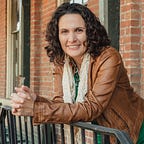Inside the Secret World of Covenant Communities
The tight-knit, restrictive, and obedient religious groups whose views shaped the country’s newest Supreme Court Justice
In the summer of 1974, John Flaherty, an 18-year-old high school grad, attended a Thursday night prayer meeting at a local Catholic parish in East Liverpool, Ohio. When the group slipped into glossolalia — speaking in tongues — Flaherty was transported. There were angels in the room, he recalled, singing together in harmonies that floated in every direction. That fall, when he enrolled as a student at the College of Steubenville, the young Catholic started attending prayer meetings on campus and was baptized in the Holy Spirit. He played guitar and sang at Thursday night prayer meetings, and eventually began speaking in tongues.
Flaherty met weekly with his group to worship and discuss community teachings, as well as their personal lives. What started as a small group soon evolved into a network of local bodies, or “covenant communities,” running parallel but separate from the church, each with its own hierarchy and claims to authority, and each with its own vow of Christian community and obedience to God’s direct command. By 1980, Flaherty’s group was dubbed “Servants of Christ the King,” which was under the umbrella of the Word of God…
